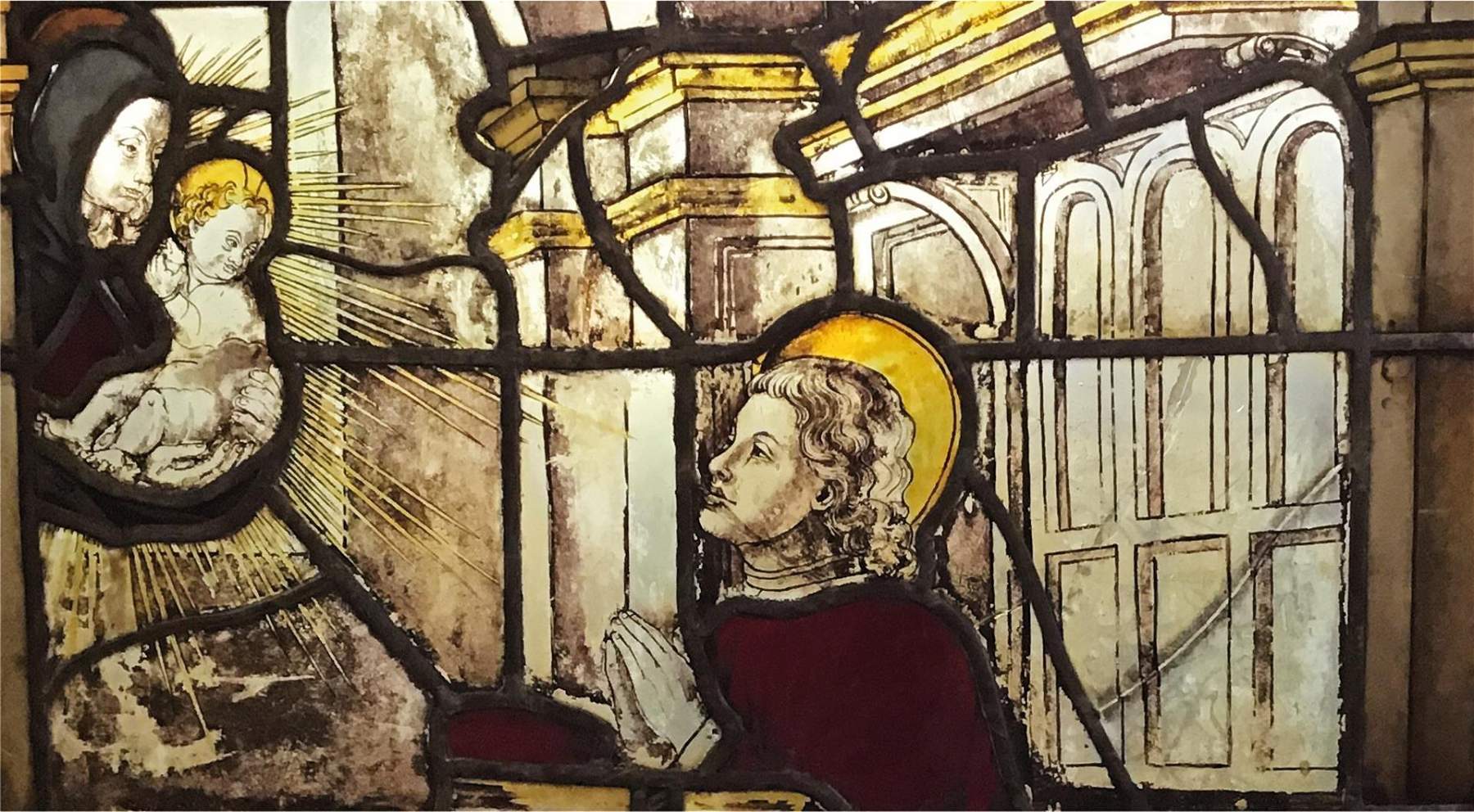Milan: restoration of Duomo's Stained Glass Window 25 can be visited
“There is a lonely place among these aisles, beyond the altar, /under the historiated stained-glass windows, where the daylight is dim and golden; / I resolved to go there to read Dante [...]” (Percy Bysshe Shelley, Letters, in Peacock’s Memoirs of Shelley, 1818). In a letter from Milan to his friend and confidant Thomas Love Peacock in 1818, the great English poet Percy Bysshe Shelley identifies a very specific place inside Milan Cathedral, in the apse, under the cathedral’s vast stained-glass windows (the largest in the world), in the dim, golden light of which he loves to retreat to read Dante’s Comedy. A mystical place, where the finite space of the Cathedral is joined with the infinity of interiority.
It is precisely within this space, caressed by the great “cascade of light” (the quote is from Pope Emeritus Benedict XVI) that the Veneranda Fabbrica del Duomo di Milano is organizing, from June 28 to September 1, 2019, Vetrata 25: an exhibition to the public inside the Cathedral’s retrochoir of some ancient and precious antels from the 15th-century stained glass window no. 25, dedicated to St. John Damascene, the subject of a recent restoration, before they go back to their original location, fifteen meters above the ground.
The initiative, accessible to all who visit the Duomo, thus finally allows visitors to admire up close the details and refined particularities of these precious masterpieces of the art of stained glass, a veritable Biblia pauperum of the city of Milan for almost six centuries.
Stained-glass window No. 25 surmounts the altar of Santa Prassede, on the northern flank of the cathedral, between the end of the apex and the beginning of the apse. It is one of the oldest stained-glass windows in the cathedral and is a triptych composed of three lancets totaling 38 antels plus the upper rose window and 25 shaped stained-glass windows, filling the stone pilasters. The stained glass window proposes episodes from the life of St. John Damascene. Attributed to Niccolò da Varallo, made between 1478 and 1480, it was offered by the College of Apothecaries, or pharmacists of the time, in honor of their patron saint St. John Damascene, originally placed in the south transept. Already in need of restoration in 1539, the stained glass window was probably transferred at that time to stained glass window 25 in the north transept. Subsequently, it was also the subject of numerous and successive interventions in the nineteenth century, under the care of the architects of the Veneranda Fabbrica Giuseppe Vandoni and Paolo Cesa Bianchi; moreover, the latter initiated one of the very first photographic campaigns as early as 1883.
The restoration of the stained-glass window, approved by the Soprintendenza Archeologia, Belle Arti e Paesaggio for the city of Milan and conducted by Laura Morandotti ’s laboratory, was due to the unavoidable need to work on the deformed frames that were compromising its structure. The cleaning from organic deposits that made the scenes almost illegible brought out extraordinary details and revealed surprising details that today the Veneranda Fabbrica wants to offer to the close contemplation of the Milanese and all those who will visit the Duomo during the summer months. The restored antels will be returned to their original location in the fall of this year.
John Damascene was a leading figure in the history of Byzantine theology in the seventh century, an eminent doctor in the history of the universal Church. He is above all an eyewitness to the transition from Greek and Syriac Christian culture to the culture ofIslÄm. A saint to whom the stained glass windows of the Cathedral perhaps owe - indirectly - their existence. Indeed, Damascene was a protagonist of a firm opposition against those who denied the possibility of using images in Christian worship and churches. According to the saint, in fact, God chose human history to reveal himself and became incarnate in the womb of the Virgin Mary to become man among humans in his Son Jesus and manifest his face. His discourses on images underlie the full rehabilitation of John Damascene and his canonization by the Orthodox Fathers convened at the Second Council of Nicaea in 787, the seventh ecumenical council. St. John Damascene was proclaimed a Doctor of the Church by Pope Leo XIII in 1890.
For all information you can visit the official website of the Milan Cathedral.
Source: communiqué
 |
| Milan: restoration of Duomo's Stained Glass Window 25 can be visited |
Warning: the translation into English of the original Italian article was created using automatic tools. We undertake to review all articles, but we do not guarantee the total absence of inaccuracies in the translation due to the program. You can find the original by clicking on the ITA button. If you find any mistake,please contact us.



























